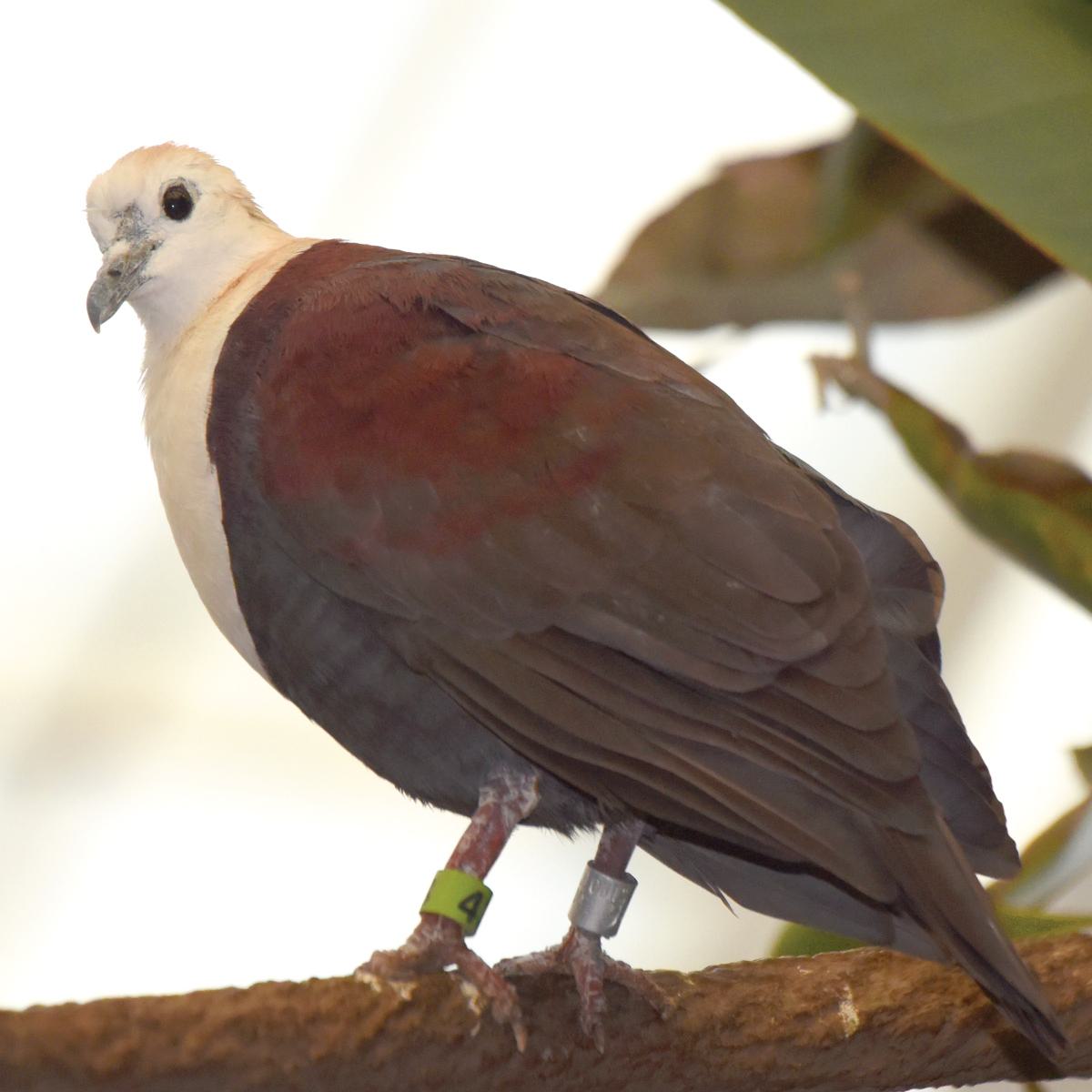
White-throated Ground Dove
Alopecoenas xanthonurus
Did you know?
- Its favorite food is fruit, but it will also eat seeds, leaves and flowers.
- This bird is solitary and rarely found in pairs outside of breeding season.
- Males are territorial and will fight other males.
- A female lays one or two eggs.
- Both parents build a nest and take turns incubating (sitting on) the eggs.
I'm a Survivor
This bird was wiped out on Guam by the accidentally introduced brown treesnake, but it survives on nearby islands and in the care of Zoos.
Milky Meal
When chicks hatch, their parents feed them "crop milk". This is a high-fat substance that comes from a food storage organ, which is called the crop.
Threat Level
- Unknown
- Common
- Near Threatened
- Threatened
- Endangered
- Critically Endangered
- Extinct in the Wild
Near threatened
The White-throated Ground Dove is likely to qualify for threatened category in the near future, perhaps very quickly depending on local development projects such as rainforest logging.
Range
Northern Mariana Islands
Habitat
Primary and secondary forests

We care about white-throated ground doves
Accidentally introduced in Pacific Islands after World War II, the brown tree snake was the first land predator that the native birds, like white-throated ground doves, had ever faced. They had no natural defenses to protect themselves, their nests, their eggs and their young. The brown tree snake devastated bird populations.
The efforts by the Saint Louis Zoo to save Pacific Island avian species began in 1994 when the Zoo joined forces with other organizations to form a group called Pacific Bird Conservation. Since then, Zoo staff have been active in moving birds to other islands, forming assurance populations. This work is in collaboration with the Saint Louis Zoo WildCare Institute, U.S. Fish and Wildlife and Wildlife Service, and Pacific Bird Conservation.
Find this animal in Historic Hill

SAINT LOUIS ZOO ZONE
Historic Hill
Historic Hill is a lovely stroll through one of the oldest parts of the Saint Louis Zoo. From the 1904 World’s Fair Flight Cage to the Spanish architectural flavor of the 1920s in the Bird House, Primate House and Herpetarium to the finishing touches of our thoroughly modern exhibits, this area of the Zoo has a unique ambiance and a nostalgic history that make it a great destination.

